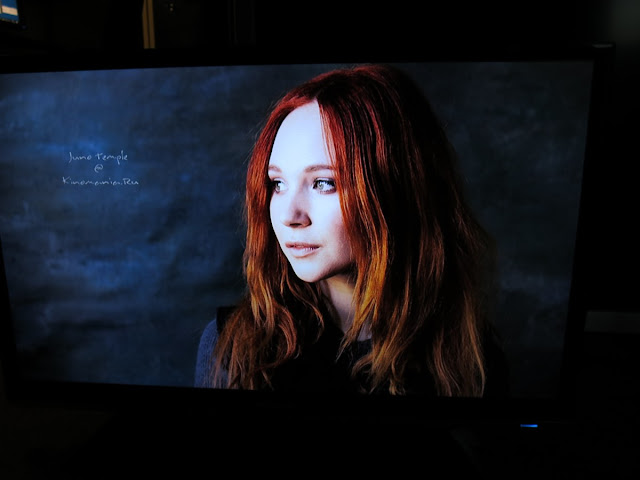The 25V for the inverter checked ok and stable. After dismantling the panel I pulled out my LED backlight tester. And this was the result, three LEDs on the top were dead. Most likely the heat is accumulating at the top and those die first.
In this model, the inverter is mounted inside the panel.
I asked for help in the IWENZO Forum and a member sent me 10 LEDs. Thank's Jens! In the meantime I ordered a sack full of LEDs from Aliexpress.
I used a spatula to remove the strips from the panel. They were glued with adhesive tape, whose glue was hardened already.
To test a single strip, use the test points at the socket end. The polarity is printed next to them.
The plastic lenses had to be removed forcefully. They had been melted onto three black plastic pins.
The first surprise was that the replacement LED had cathode and anode swapped. The large pad was the anode. So the large pad on the LED had to fit on the small pad on the strip, which moved the LED out of the original center.
This is way too much solder paste, by the way. I shorted the LED out with that. Half of the amount is just right.
I soldered the LEDs with 370°C hot air. This turned out to be a good compromise between speed and melting the LED lens. Using the iron was impossible due to the pad swapping. The small pad on the strip just was not reachable anymore. You will see the LED start floating once the solder is melted. It is a pretty easy and clean job.
Testing the new LED:
Testing the backlight again:
At the first attempt, I did not take much care about the lenses. I centered them on the LEDs and glued them with plastic glue. The result was this:
Ugly clouding! Why was that? The lenses have to sit perfectly perpendicular on the strip. Once they are skewed a little, their light beam doesn't hit the diffuser plate in a 90° angle anymore.
So I removed the lenses once again and used a file to make the pins on which they rest perfectly flat. The black pins on the strip got the same treatment. They were uneven due to the hot air and forceful removal of the lens.
Now this looked much better:
The clouds are almost gone. You could still see the new LEDs, which are brighter and more blueish, but that wouldn't be noticeable with normal images.
Her cuteness Juno Temple was happy to test the new backlight.
The backlight intensity was set to 100. I turned it down to 70 to prolong the life of the remaining LEDs. I strongly recommend to reduce the backlight intensity on LED TVs if possible! The most common fault of modern TVs (2013 and up) are faulty LEDs. The panels are constructed so sloppily (on purpose?) that a failure is inevitable.
It is ridiculous, if you think about it. LEDs replaced the CCFL tubes not only for economical reasons, but they also promised a longer life. The older Philips models for example proved that right, I have yet to see one with a failed LED, but the latest rubbish panels from LG and Samsung turned it upside down.
If the term planned obsolescence applies to TVs, the backlight would be my candidate. All other defects I've seen so far may be attributed to a lack of careful engineering, but those direct-lit LED backlights are around for over three years now, they die like flies and nothing has changed.
About LEDs
I have used this type: UNI LED
Problems: they have an opposite polarity and they are a little too big. They are more blue and shine a little brighter. I cannot tell for sure whether that is due to the aging of the original LEDs, but I assume not.
I think this type: JUFEI LED fits better. It has exactly the right size and the polarity matches. Due to its slightly higher forward voltage I assume it would shine darker.
I am going to keep various types with both polarities on stock. They are cheap after all.












Have you tried replacing leds while still on panel? Saves time removing strips. I also attach lens with led lit so I know I have it centered.
ReplyDeleteI assumed the hot air procedure is more effective when the strips are not attached to the metal chassis. The trick with the lens is interesting. Thanks for sharing!
ReplyDelete